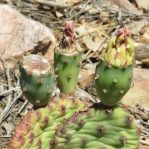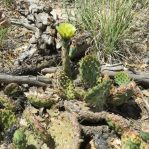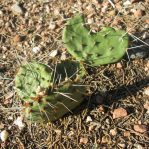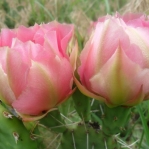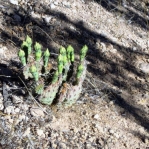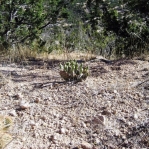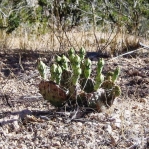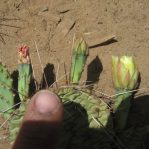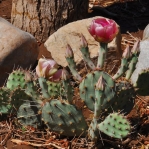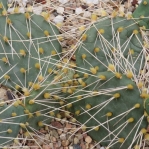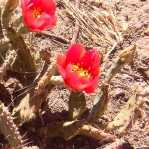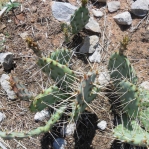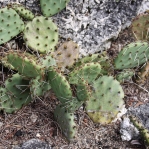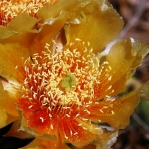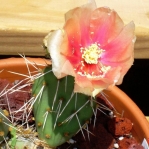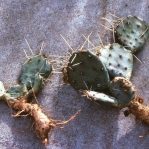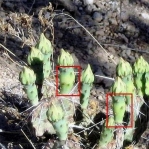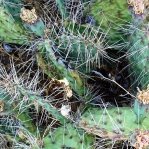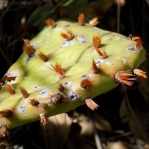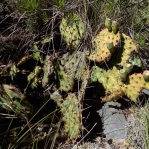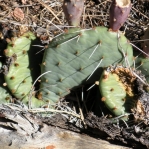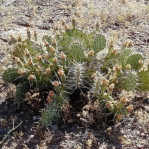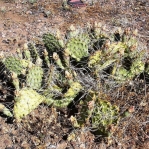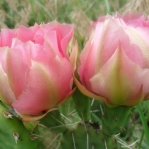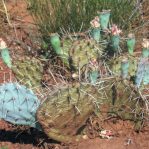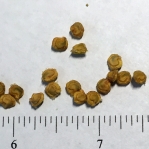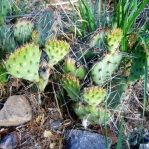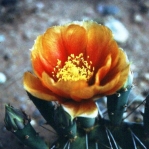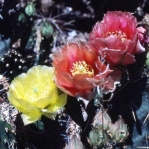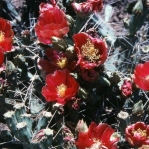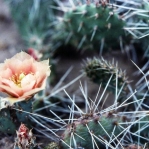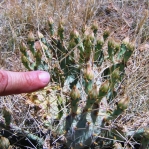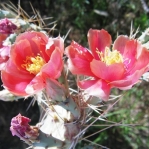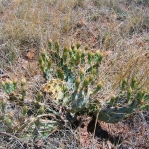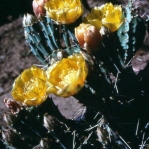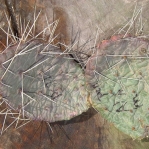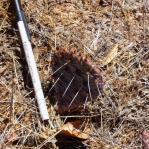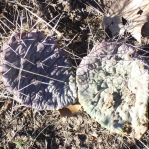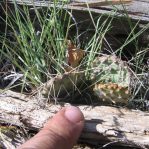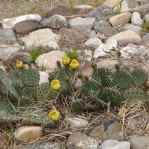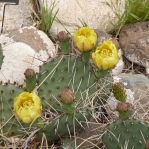
Salm-Dyck, Cacteae in Horto Dyckensi Cultae Anno 1849. 236.
Herbarium; Herbarium; Herbarium; Herbarium; Herbarium; Herbarium; Herbarium; Herbarium (O. ballii); Herbarium (O. ballii)
Original Description
What is Opuntia pottsii?
Opuntia pottsii is a small prickly pear cactus with colorful flowers. It is found in many regions of the West, but it is seldom abundant. It grows from about 3,500 ft to about 9,000 ft. There is variation within the species.
Details
Opuntia pottsii is a small prickly pear cactus, sometimes just 10 to 15 cm tall or 25 cm across, often with just 6-10 cladodes. There are (0)1-4(5) spines per areole in the distal portion of the pad. Spines are gray-white to red-brown or rarely yellow, erect or reflexed, terete or proximal ones flattened, sometimes spirally twisted. Spines are slender and the longest may be over 4(5) cm. The cladodes of this Opuntia are grayish or bluish to dark green, cuneate-obovate to commonly rhombic, 5 to 15(20) cm long and 5 to 7(9) cm wide. The cladodes are fleshy but firm.
Flowers are reddish or pink (sometimes yellow). The style is whitish and the stigma is white to pale yellow. Anthers are yellow. Seeds are tan to gray, subcircular, thick and warped; the girdle protrudes about 0.5 mm.
O. pottsii is tetraploid.
Other Notes
Some O. pottsii plants grow upright from a single central stem; the pads do not crawl along the soil as is often the case with many small Opuntia species. Benson (Cacti of the United States and Canada, 1983) proposed a very broad concept of O. macrorhiza that included O. pottsii as a distinct variety. In fact, while O. pottsii is variable, it clearly differs from O. macrorhiza by the flower color as well as the long, slender pericarpels and its smaller size. There is enough variation within the species that varieties might be described. A distribution map is provided by the Flora of North America online, but the map is conservative because this prickly pear cactus has been observed in more northerly and more easterly areas by the authors. In fact, O. pottsii occurs in northern Arizona as far west as the Hualapai Mountains, in much of New Mexico, and parts of northwest Texas. In Arizona, it is often thought to be O. macrorhiza.
The plants can be confused with other small opuntias including O. polyacantha and O. macrorhiza if they are only casually observed or if they are growing among grasses, etc. However, O. pottsii is noticed in flower because it has pink, red, orange, or salmon flowers (However, some populations have yellow flowers with/without red centers.). Britton and Rose reported that the type locality for this prickly pear cactus is near Chihuahua, Mexico. Opuntia pottsii is tetraploid. (However, some populations include, sometimes exclusively, plants with yellow flowers with/without red centers.)
Because most forms are exceptionally cold hardy, the small compact growth habit, and the abundant showy flowers in varied and often unusual colors, O. pottsii is a good garden plant.
Plants at higher elevations with wider pads and shorter ovaries were described as O. pottsii montana (Succulentes 25, numero special: 40, 2002). O. pottsii montana is synonymous with O. plumbea Rose 1908 and O. loomisii Peebles 1939.

